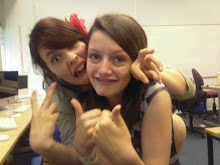Shot Types
Establishing Shot – Gives anchorage to the setting, period of time, culture or physical location in which a text is set.
Extreme close up – To show the emotions that are occurring on the characters faces and to highlight small but important details.
Close up – Gives an object specific meaning, shows emotion on a face, and usually only one character so that it can make the character seem isolated.
Mid Shot – a shot from the waist up of the subject to get more detail on the expression and register the emotion, butt doesn’t over-emphasise.
Long Shot – Presents the setting in which the scene takes place in simple details. Sometimes includes characters.
Extreme Long Shot – To show a broad scale of the surroundings, and to give anchorage to the setting.
Angle Types
Low Angle – Used to make a subject appear bigger, stronger and more powerful, or to make an audience feel smaller and more vulnerable.
Mid Angle – Just to show the basic actions, to not distract the audience, and to not make much of an impact on the scene.
High Angle – To make the subject seem frail, weak and small, or to make the audience feel more powerful. Also gives the audience a sense of scale.
Dutch Tilt – When the angle is nearly mid angle, but is off to one side just slightly, to give the audience a feeling that something’s not quite right in the scene.
Conglomerate – A media conglomerate describes companies that own large numbers of companies in various mass media such as television, radio, publishing, movies and the internet
Major – a major film studio is a movie production and distribution company that releases a substantial number of films annually and consistently commands a significant share of box office revenues in a given market
Indie – Short for independent, a film that is produced outside of the Hollywood studio system, produced and funded by an independent company. An indie film will break the rules of traditional narrative and experiment with new and different ways of telling stories - to create meaning in a non-realistic way.
Cross Media – is when promotional material relevant to film marketing can be communicated by any mass media such as e-mails, letters, web pages, or other recruiting sources. This method can be verly successful for publishers because the marketing increases the ad’s profit from a single advertiser.
Convergence – Convergence is to use various media platforms to create new experiences, new forms of media and content that connect us socially. Convergence is very popular. For the consumer it means more features in less space, while for the media conglomerates it means remaining competitive in the struggle for market dominance.Synergy – synergy is the promotion and sale of a product (and all its versions) throughout the various subsidiaries of a media conglomerate e.g. films, soundtracks or video games. These products can help advertise the film itself and thus help to increase the film's sales.
Subscribe to:
Post Comments (Atom)

No comments:
Post a Comment